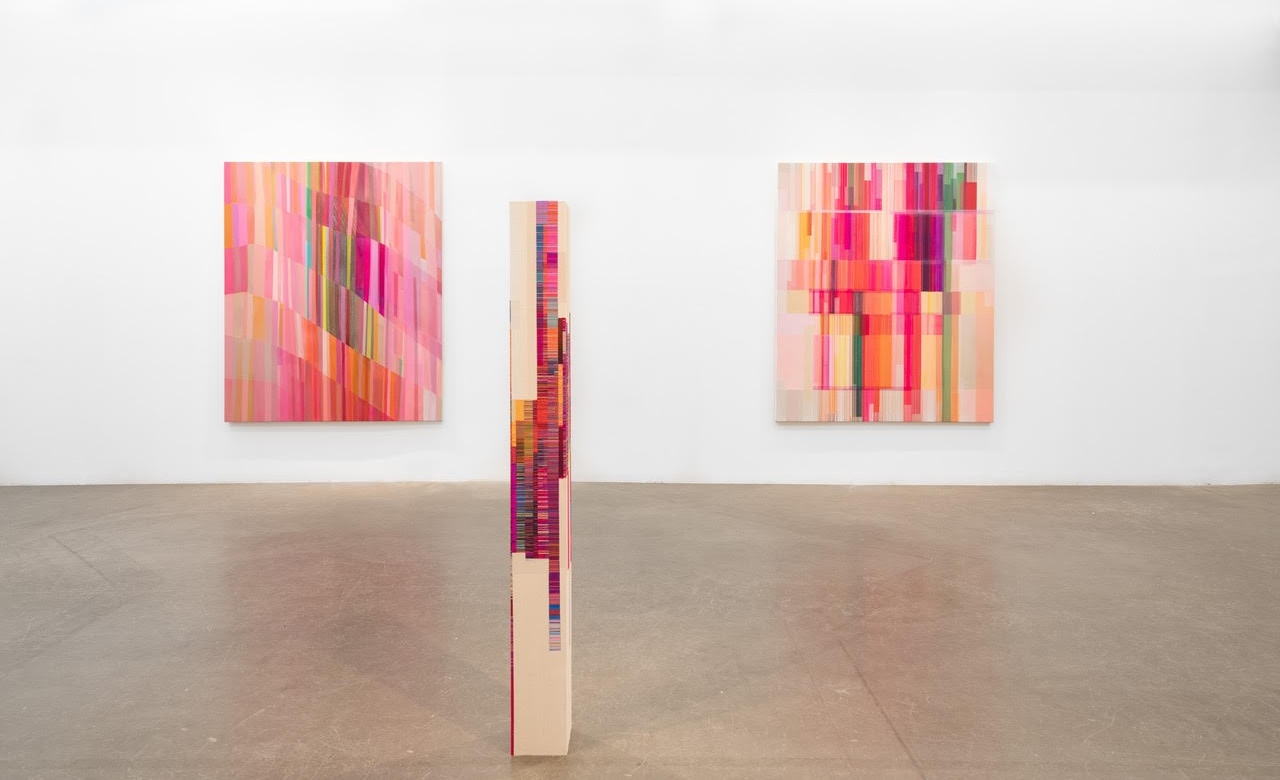Drawing connections
This year, Grassi joined eminent artists such as Miriam Schapiro and Jacob Lawrence by becoming a Guggenheim Fellow. These awards are offered to exceptional scholars and creators “under the freest possible conditions,” to honour their past accomplishments and encourage their future potential. This means the funds aren’t tied to any specific project.
Although Grassi can’t predict everything she will do in the months ahead with support from the fellowship, she is currently finalizing a public art piece — a colourful cascade on glass for Montreal’s revamped women’s YWCA — and bidding on another one. She’s also collaborating on a monograph of her work and preparing for several new exhibitions, including The Theory of Networks, an all-female, interdisciplinary group show examining the nature of connectivity.
Connections are a recurring theme in Grassi’s paintings, which often find ways to tie past technologies, spaces and women’s work to the present. One of the relationships that has inspired her is that between weaving and computer code: early computer programs were inspired by the Jacquard loom, a machine that used punched cards to produce woven designs.
Grassi’s work has also explored the links between the generations, and she’s cognizant of her own connection to previous generations of artists. “Historically, there have been a lot of strong abstract painters here in Montreal,” she says. “They include Guido Molinari, Yves Gaucher and Jean McEwen, who were among my teachers at Concordia.”
“My professors modelled a seriousness and a lifetime commitment to their art practice,” adds Grassi, who follows their example by making time for painting or sketching nearly every day, even though she also teaches. “Observing the kind of lives they lived was a huge influence, and one of the reasons why Concordia was quite defining for my development as an artist.”


 Three works from Grassi’s recent Zip Stack Flow exhibition | Credit: Paul Litherland
Three works from Grassi’s recent Zip Stack Flow exhibition | Credit: Paul Litherland
 Now entering the third decade of her career, Grassi has a busy year ahead that will include a residency at the International Studio & Curatorial Program in Brooklyn, New York, and a solo show at the Musée des Beaux Arts de Sherbrooke in Quebec. | Credit: Ottawa Art Gallery at City Hall
Now entering the third decade of her career, Grassi has a busy year ahead that will include a residency at the International Studio & Curatorial Program in Brooklyn, New York, and a solo show at the Musée des Beaux Arts de Sherbrooke in Quebec. | Credit: Ottawa Art Gallery at City Hall